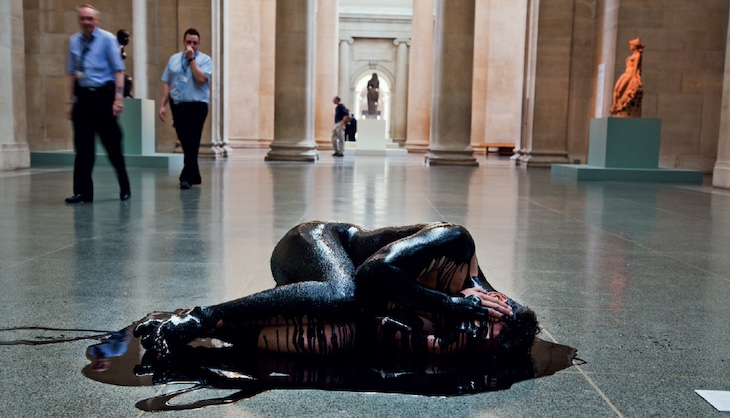Along Ecological Lines
I just stumbled upon this book, it is quite exciting and educational. Aleks
.
\\\\\\\
Along Ecological Lines – Contemporary Art .and Climate Crisis
Book by Barnaby Drabble
What does it mean that art is now being made in the context of a climate crisis that threatens our very existence on the planet? As our species begins to experience the consequences of its ecocidal practices and, with painful slowness, considers its response, what do artists do and how do they do it? Confronted with images of devastation, narratives of failure and practices of looking away, what can art show, tell or enact differently? As one way of life shows signs of coming catastrophically to an end, what role can art and artists have in the transition to what follows?

.
I can’t quite remember when I decided to cycle around Europe on a folding bicycle, talking to artists about climate change, but the idea emerged between 2010, when I first became familiar with the coming together of a global climate movement, and 2015, when the COP21 climate change conference in Paris was met with the D12 protests and an unprecedented level of artistic activity. It seems likely that it was also influenced by my decision to move from Zurich to join a group setting up an eco-community in the forests of the north of Catalonia in 2013. This new context for my life and work raised many questions for me, and I found myself thinking about art differently, working with my students in new ways and reading and researching more broadly than ever before. I fell into a space where art, activism and the pursuit of another way to practise life started to look increasingly aligned. In John Jordan and Isabelle Frémeaux’s film Paths Through Utopias, a road movie set in a post-capitalist future, they drive through Europe visiting individuals and collectives involved in the new forms of community that follow the collapse of civilisation as we know it.
The trick in the film is that the squats, camps, homesteads and worker-run factories we encounter are no figment of the imagination but real projects, stranded this side of the inevitable changes to come, anomalies that may soon become the norm. Self-organised, de-grown, resilient and fiercely resistant, the film’s protagonists, who play along with the playful premise in the interviews, appear prescient and visionary. When I first encountered the film I realised that I was drawn to it because of a certain familiarity with its subjects. I knew these people from the future, not exactly the ones depicted in their movie but others like them. At first I met them by accident, but after a while I sought them out and eventually they came to find me.
‘Our economic system and our planetary system are now at war. Or, more accurately, our economy is at war with many forms of life on earth, including human life. What the climate needs to avoid collapse is a contraction in humanity’s use of resources; what our economic model demands to avoid collapse is unfettered expansion. Only one of these sets of rules can be changed, and it’s not the laws of nature.’
The whole book is available on Academia.edu =>

Leave a Reply